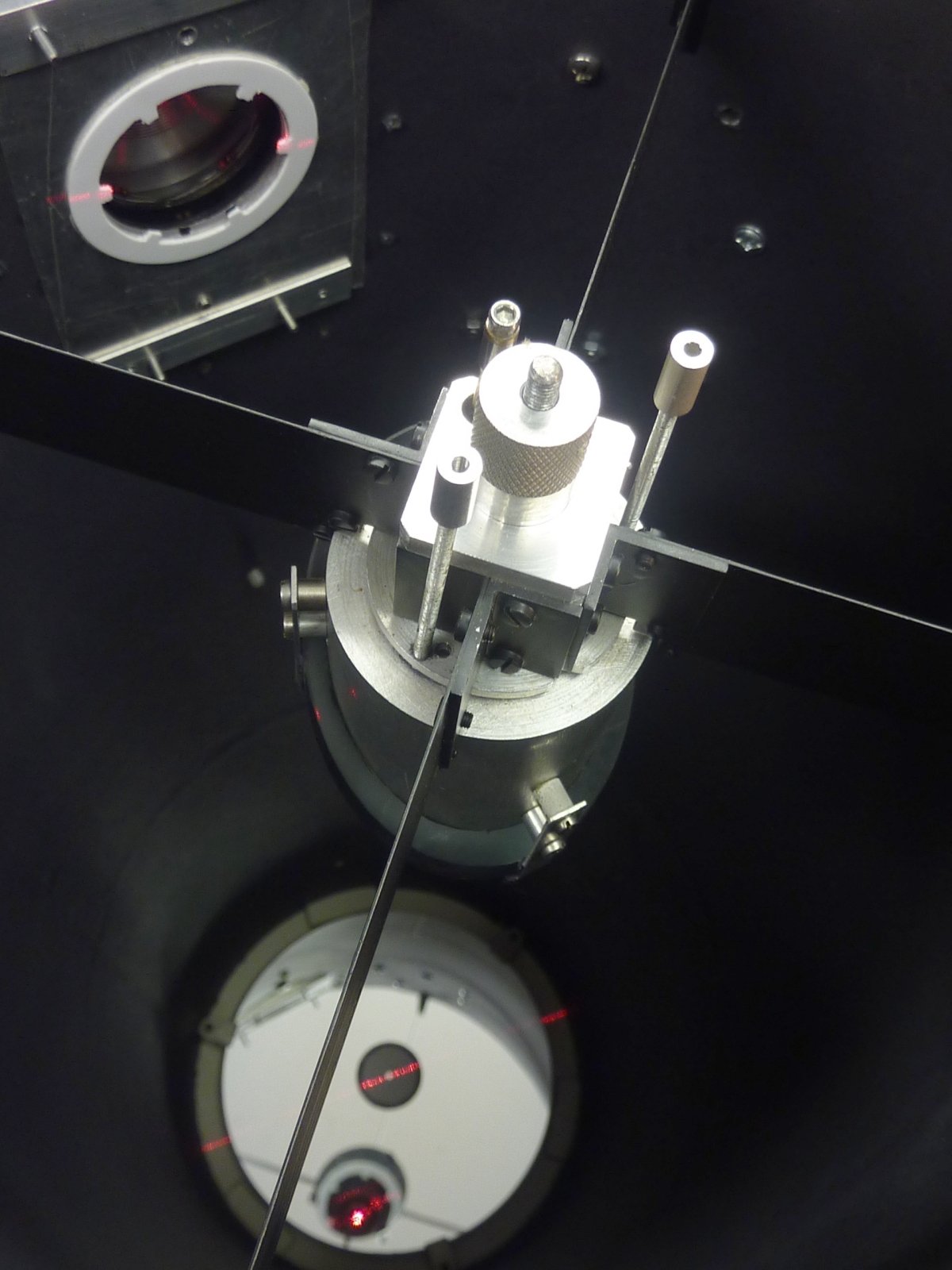|
The laser collimator comprises a collimated (i.e. parallel, infinity focused) laser that is accurately aligned with respect to its housing and has a small screen around the exiting laser beam to capture and locate its reflection. First of all, the laser beam should be checked to be well aligned with its housing: Rotating the laser collimator in the eye-piece holder should not have any significant effect on the location of the spot a couple of meters away. If it does, the laser has to be re-aligned with its housing. For this purpose the laser collimators I use contain a kinematic mount to adjust the tip/tilt of the laser beam with respect to the housing. With the laser collimator in the eyepiece holder, adjust the secondary mirror (the 45-degrees mirror) in tip/tilt and rotation, until the laser beam hits the center of the primary mirror. It helps (or is in fact indispensable!) to have a small sticker or permanent marker circle marking the center of the primary (no concerns!: it will not affect the performance of your Newton telescope since this center is obstructed by the secondary mirror). Now adjust the primary mirror alignment such that the laser beam returns into itself. The small screen of the laser collimator around the exiting laser beam will help finding the reflection and ease the adjustment procedure. It may also help to have knobs of the (in general) three screws with numbers to remember what screw was in what position while aligning. Once done, the Newton telescope is aligned! The laser collimator for fitting a 1.25" eyepiece holder I've constructed is shown here (including a reflection of the beam on the small screen). It contains a small collimated, red laser, a self-constructed 25mm diameter kinematic mount and a 1.25" barrel made from a piece of 32mm PVC tubing. My f/D=4.3 Newton telescope has a perforated primary (former Cassegrain primary) and thus lacks the center that is normally used for the alignment. I constructed a new laser collimator that features a small cylindrical piece of glass (4mm diameter) to create an expanding laser line that stretches over the 50mm diameter perforation (in fact over the whole primary). The, via the secondary mirror reflected line, hits a circular screen just in front of the focuser. This screen is simultaneously illuminated from the other side by the exiting laser line. These should align: First, using the secondary mirror adjustments (tip/tilt/rotation), the laser spot without the line-maker is aimed at the center of the primary. For that purpose the latter contains a target with central hole. The line maker is inserted and rotated such that the laser line coincides with and illuminates the small opposed vanes on the projection screen (3 sets, 120-degrees apart). The primary mirror adjustment screw perpendicular to the laser line is used to align the reflected laser line on the same vanes. This is repeated in the two other orientations. This completes the alignment. The images below give some more details and may help to understand the above: |




